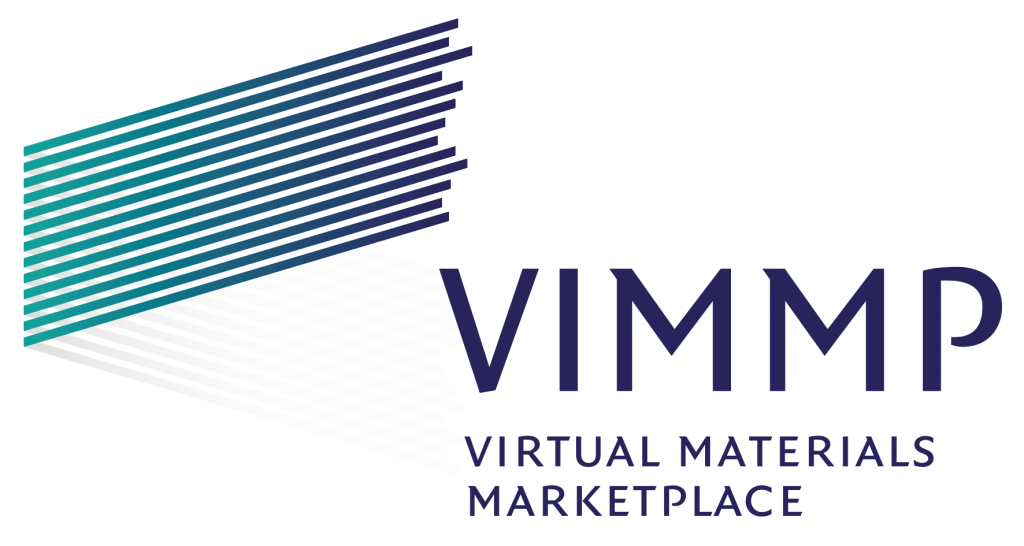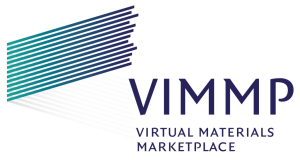Objective
VIMMP facilitates and promotes the exchange between all materials modelling stakeholders for the benefit of increased innovation in European manufacturing industry.
VIMMP will establish an open-source, user-friendly, powerful web-based marketplace linking beneficiaries from different manufacturing industry sectors with relevant materials modelling activities and resources. To enable a seamless and fully integrated environment, VIMMP is built on solid taxonomy and metadata foundations, including those centred on materials models, software tools, communities, translation expertise and training materials. VIMMP is a true marketplace, offering a substantial boost to all providers of tools and services; integrating modelling platforms based on Open Simulation Platform (OSP) standards that will be pursued in collaboration with the EMMC. Thus, any software owner can easily integrate models and certify codes to adhere to OSP standards. The Translator function will be supported by novel, collaborative tools that use metadata to combine models on an abstract logical level. OSP standards enable Translators and End User to build and deploy workflows quickly.
VIMMP contributes novel avenues for coupling and linking of models, which will be validated in the context of three overlapping industry applications: personal goods, polymer nanocomposites and functional coatings. Data repositories relevant to modelling will be developed and integrated in VIMMP, including a novel input parameter repository for mesoscopic model, also materials properties and associated validation data. VIMMP will comprise a full set of education and training resources relevant for a wider range of manufacturing industry. VIMMP users will profit from lowering risk and upfront cost, greater speed and agility of deploying materials modelling and realising the wide range of demonstrated economic impacts.
Project structure
WP1 Metadata, interoperability design and standards (STFC):
The approach in WP1 will utilise existing and ongoing developments of fundamental materials model classification and taxonomy as a basis for developing a powerful framework ensuring a seamless data exchange and interoperability across all components of the marketplace. This includes (open) metadata standards, taxonomies and ontologies.
WP2 Interoperability between and validation of models and simulation (EDF):
In WP2, novel tangible avenues for integrating multiple materials models will be pursued, by coupling and linking them, as well as by developing of homogenisation techniques. To enable the combination of different tools and computational codes into adaptable, efficient and practical workflows, WP2 will focus on building an open simulation platform so as to easily include and deploy the required software stack. These developments will be made hand-in-hand with WP1, by using wrappers and mappers, and specifications/requirements from WP6.
WP3 Data and knowledge base (IBM CH):
WP3 will utilise the standards and taxonomies/ontologies developed in WP1 in order to develop a taxonomy driven marketplace for data. The approach will support linking different databases and make searching across different databases effective and easy, hence providing a good user experience. Moreover, WP3 will facilitate the ‘data to knowledge’ transformation by developing and performing advanced analytics and data based modelling, hence adding value to modelling and simulation.
WP4 Translation and Training (EPFL-CECAM):
WP4 will facilitate a vivid marketplace for all aspects related to training and translation, ensuring marketplace users can easily access information and training resources to support their decisions about utilisation of modelling throughout all stages from early exploration to adoption. In particular, the role and work of Translators in this process will be strengthened. WP4 will support not only ‘matchmaking’ via an experts/translators database and a wide repository of industries interested in translation but also build a collaborative space for translators to interact securely with industrial clients. Also, the training required to ensure that both users and developers of the Marketplace platform will be able to make good use of it will be provided. This workpackage will also provide training on modelling to be able to appreciate and exploit the marketplace contents.
WP5 Marketplace platform (OSTHUS):
WP5 will build a web-based marketplace platform which provides an easy access to the knowledge, tools and material modelling workflows to a wide range of users. The foundation of the marketplace platform is a data and modelling format, which ensures interoperability. Taxonomies are used to make the whole data accessible and create explicit conceptualizations of the materials modelling domain.
WP6 End user cases: requirements, validation and demonstration (UNILEVER):
WP6 covers four end user cases, including food emulsions, personal care liquids, tire compounds and polymer corrosion inhibitors for paints & coatings. These challenging cases will guide the marketplace development in terms of requirements for “Apps”, which operate different (interchangeable) codes and calculate physical quantities as input to simulations at different length scales; (meta)data requirements for the marketplace, training and translation requirement, workflows, validation and benchmarking. WP6 user cases will finally be the basis for demonstrating the marketplace capabilities.
WP7 Dissemination, exploitation and marketplace business plan (GCL):
WP7 is focussed on the realisation of the business plan and exploitation of the technology, ensuring the industrial needs are met and the intellectual property is protected. It will also oversee the dissemination of project outputs to potential beneficiaries and the wider community.
WP8 Management and coordination (IFAM):
The final work package is the project management WP which will oversee consortium and overall project management for the VIMMP project. The work package has two pillars: i) the general day-to-day and financial coordination activities and project management as well as ii) the scientific coordination aimed at supporting the WP leaders in decision making. The software quality management is also part of WP8.

